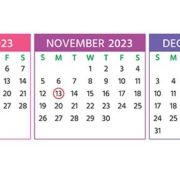The Standard Mileage Rate Is Increasing – Here’s What You Need to Know
- Learn about the increased standard mileage rate taking effect on July 1, 2022.
- Find out why raising this rate mid-year is so unusual.
- Learn about the two options businesses have to calculate deductions for operating an automobile for business purposes.
Business owners are aware that the price of gas is historically high, which has made their vehicle costs soar. The average nationwide price of a gallon of unleaded regular gas on June 17 was $5. This is a substantial increase compared with $3.08 just a year earlier, according to the AAA Gas Prices website. A gallon of diesel averaged $5.78 a gallon, compared with $3.21 a year earlier.
Fortunately, the IRS is providing some relief. The tax agency announced an increase in the optional standard mileage rate for the last six months of 2022. Taxpayers may use the optional cents-per-mile rate to calculate the deductible costs of operating a vehicle for business.
For the second half of 2022 (July 1–December 31), the standard mileage rate for business travel will be 62.5 cents per mile. The rate during the first half of the year (January 1 – June 30) stood at 58.5 cents per mile. There are different standard mileage rates for charitable and medical driving.

Raising the standard mileage rate mid-year is a special situation
Raising the standard mileage rate in the middle of the year is unusual. Normally, the IRS updates the mileage rates once a year at the end of the year for the next calendar year. However, the tax agency explained that “in recognition of recent gasoline price increases, the IRS made this special adjustment for the final months of 2022.” While the move is uncommon, it’s not without precedent. The mileage rate increased for the last six months of 2011 and 2008 after gas prices rose significantly.
Fuel costs are a significant factor in the mileage figure. However, the IRS notes that “other items enter into the calculation of mileage rates, such as depreciation and insurance and other fixed and variable costs.”
Two options
The optional standard mileage rate is one of two methods a business can use to compute the deductible costs of operating an automobile for business purposes. Taxpayers also have the option of calculating the actual costs of using their vehicles rather than using the standard mileage rate. This may include expenses such as gas, oil, tires, insurance, repairs, licenses, vehicle registration fees, and a depreciation allowance for the vehicle.
You may get a larger deduction using the actual expense method rather than the standard mileage rate. But many taxpayers don’t want to spend time tracking actual costs. Be aware that there are rules that may prevent you from using one method or the other. For example, what if a business wants to use the standard mileage rate for a car it leases? Then the business must use this rate for the entire lease period.
Want to talk about your particular circumstances to determine the best course of action? Call Fiducial at 1-866-FIDUCIAL or make an appointment at one of our office locations to discuss your situation.
Ready to book an appointment now? Click here. Know someone who might need our services? We love referrals!
For more small business COVID-19 resources, visit Fiducial’s Coronavirus Update Center to find information on SBA loans, tax updates, the Paycheck Protection Program, and paid sick and family leave.









